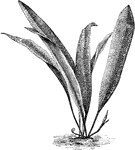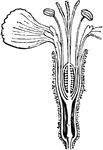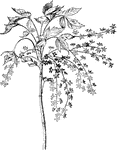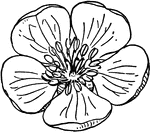574 illustrations of flowers and shrubs including: acacia, acanthus, adder's tongue, agave, alfalfa, alisma, allspice, aloe, anacharis, aristolochia, arnica, arrowhead, arrowroot, artichoke, asparagus, aster, azalea, and azolla

Angelica
"A genus of plants of the natural order Umbelliferae, by some botanists divided into two: A., and Archangelica.…

Garden Angelica
The flowers of Archangelica officinalis, or the Garden Angelica, a flowering plant in the Apiaceae family.

Angiosperm
This illustration shows the flower and sporophylls of Angiosperms: 1, flower of Sedum with leaf-like…
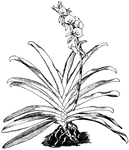
Angraecum Superbum
The stems of Angraecum superbum are four feet or more tall. The flowers are green and spreading with…

Anigozanthus Flavisdus Inflorerescence and Leaf
The flower of anigozanthus flavisdus is a yellowish green color. There is also a scarlet and green flowered…
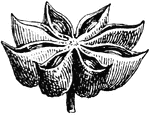
Star Anise
A chinese flower. It abounds in a volitale oil which gives it an aromatic flavor and odor. Used as a…

Annona
"Anona furfuracea. 1. an expanded flower; 2. a vertical section of male and female apparatus, which…
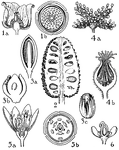
Annonaceae, Myristicaceae, Monimiaceae, and Lauraceae Orders
The orders of Annonaceae, Myristicaceae, Monimiaceae, and Lauraceae are pictured. The flowers of these…

Annual Honesty
Annual Honesty (Lunaria annua) is a tall (height about 1 m), hairy-stemmed biennial plant found throughout…

Xeranthemum Annuum
A commonly cultivated species of flowers with purple flowers native to Europe and Iran.

Anoectochilus Regalis
Anoetochilus regalis flowers are some of the most attractive of the anoetochilus. The leaves are oval,…

Ant Plant
"An epiphytic ant plant (Myrmecodia pentasperma) of the Bismarck Archipelago. The large pseudobulb is…

Habit and Inflorescence of Antennaria Margaritacea
The flowers of antennaria margaritacea are white and grow in clusters. Each head of flowers is encircled…

Anthemis Cotula
The common names of Anthemis cotula are may-weed and dog fennel. The weed grows one to two feet high.…

Anthemis Tinctoria
The common name of Anthemis tinctoria is golden marguerite. The plant grows two to three feet tall.…

Anthericum Liliago
The common name of Anthericum liliago is St. Bernard's Lily. The stem is simple and two to three feet…
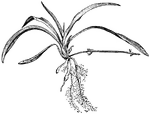
Stolon of Anthericum Liliago
The common name of Anthericum liliago is St. Bernard's Lily. Pictured is the stolon of the flower.

Anthericum Liliastrum
Anthericum Liliastrum is commonly known as St. Bruno's Lily. The flowers are a transparent white with…

Antheridia
"Image: Branch of Fucus. The organ cryptogamic plants which answers to the anther in the phanerogamic…

Antheridium of Chara
Antheridium of Chara: a, The four upper shields; b, interior; c, antheridial filament; d, two antherozoids.

Anthodiscus
"Anthodiscus trifoliatus. 1. a flower bud; 2. a flower; 3. a perpendicular section of the pistil." -Lindley,…

Anthurium Andraeanum
The leaf blades of Anthurium andraeanum are drooping. The flower spike is three to four inches long…
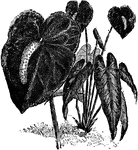
Anthurium Andreanum Flower
The anthurium andreanum flower grows on a long yellowish spike called a spadix. The outer portion, called…

Anthurium Crystallinum
Anthurium Crystallinum has large, heart shaped leaves. The leaves are a rich, velvety green and the…
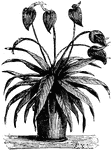
Anthurium Scherzerianum Flower
The flowers of anthurium scherzerianum rest on bright red stalks. The spadix, or the cluster of flowers…

Anthurium Scherzerianum
Anthurium scherzerianum grows one or two feet high. The flowers are slender, curled, and yellow.

Anthurium Scherzerianum Maximum Flower
The flowers of anthurium scherzerianum are gigantic, about nine inches long and four inches broad. The…

Anthurium Splendidum Flowers
The leaves of anthurium splendidum are heart shaped. The stem is short and thick. This plant grows in…

Anthurium Veitchii
Pictured is a young leaf, not yet showing the arched depressions, of Anthurium veitchii. The leaf blade…

Anthurium Warocqueanum
The leaves are Anthurium warocqueanum are oblong and long tapering. The leaves hang two to four feet…
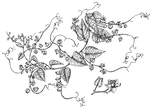
Albus Variety of Antigonon Leptopus
The albus variety of Antigonon Leptopus has flowers that are nearly or quite white. Pictured is a plant…
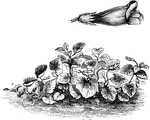
Habit and Flower of Antirrhinum Asarina
The petals of antirrhinum asarina was one and a half inches long. The petals are white, sometimes tinged…

Antirrhinum Capsule
Antirrhinum is commonly known as Snapdragon. The capsules are two celled. The upper cell bursting by…
Antirrhinum Majus
Antirrhinum Majus is commonly known as Greater Snapdragon or Common Snapdragon. This flower grows in…

Antirrhinum Majus
The common name of Antirrhinum majus is common or large snapdragon. The flowers are large and come in…

Antirrhinum Maurandioides
The flowers of Antirrhinum maurandioides are one inch or more long. The flowers are violet or purple.…
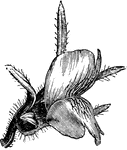
Antirrhinum Orontium Flower
Antirrhinum Orontium has rose or white colored petals. The petals are also striped with purple. This…

Antirrhinum Orontium
The common name of Antirrhinum orontium is small snapdragon. The flowers are small and purple or white.…

Aphelandra
Aphelandra cristata is a flowering plant shown potted here because it is often used as a houseplant.
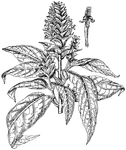
Leopoldii Variety of Aphelandra Squarrosa
The leopoldii variety of Aphelandra squarrosa is showy with yellow flowers.

Aphyllon Uniflorum
Aphyllon uniflorum has white or violet flowers. Each stem has one flower and is leafless. The plant…

Apicra Pentagona
Apicra pentagona has an erect stem that is six to twelve inches tall. The flowers are a greenish color.…
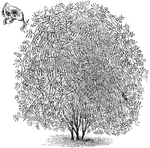
Apios Tuberosa Habit and Flower
Apios Tuberosa grows the edible tuber known as ground nut. The flowers are brownish-purple. The habit…

Apios Tuberosa
The common names of Apios tuberosa are groundnut and wild bean. The plant grows between four and eight…
Fruit of Aplectrum Hyemale
The common names ofAplectrum hyemale are putty root and Adam-and-Eve. The pods are oblong and pointed.…

Inflorescence of Apocynum Androsaemifolium
Apocynum is more commonly known as Dog's Bane. The flowers of the androsaemifolium variety are pale…
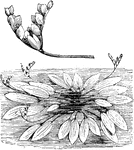
Habit and Flower-spikes of Aponogeton Distachyon
Aponogeton Distachyon is commonly known as Cape Pond Weed or Winter Hawthorn. It is an aquatic plant…

Thorn Apple
A genus of plants, with angular toothed leaves, large funnel shaped flowers, and a prickly, globular,…

Flowers of the Apricot
The flowers of the apricot are pink-white. The flowers grow singly and precede the leaves.

Orders of Aquifoliaceae, Celastraceae, Stackhousiaceae, and Staphyleaceae
The orders pictured are aquifoliaceae, celastraceae, stackhousiaceae, and staphyleaceae. The flowers…



